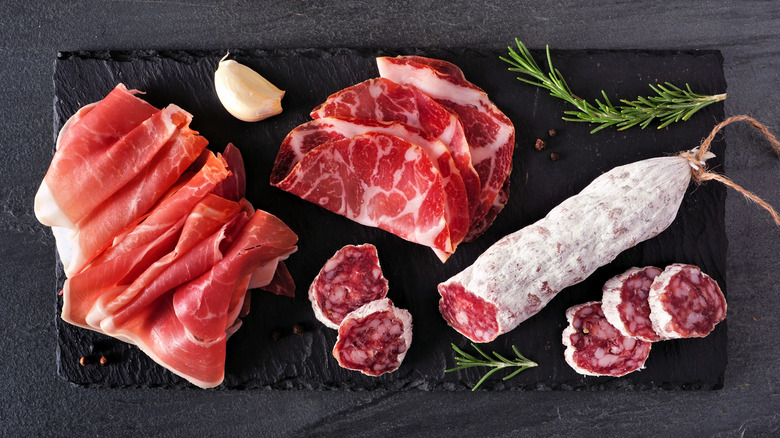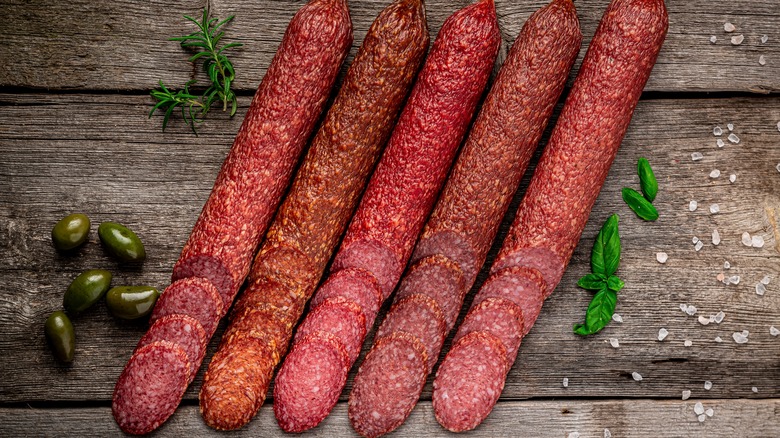The Real Difference Between Salumi And Salami
There is something special about cured meats like salumi and salami. Born of necessity when food was much more scarce, curing was a way to extend the life of a the protein-rich meat. Salting meat draws out moisture, which makes it harder for bacteria to survive and spoil it, allowing people to enjoy their meat through lean times and over the winter (via BBC). Out of a desire for survival, we got something not just practical but delicious in its own unique way, a transformation that ends with a salty, rich treat so good we still eat it thousands of years after its conception (via Volpi).
Due to the practicality of cured meat, nearly every culture produced its own version, like French charcuterie, and the Italians in particular went wild. There are over 300 different types of salami alone, according to Delallo, with many small regions having their specific versions. This would be hard enough to keep track of when you're trying to build your perfect Italian sub, but that number doesn't even include some of the most famous Italian meats you might know of, like prosciutto. Why? That comes down to the difference between salami and salumi.
What is salumi?
Even though you might be more familiar with the term salami, salumi is where you should start because it is more all-encompassing. Salumi is essentially the category of any preserved Italian meat, of which there are many more specific types, one of which is salami. Basically all salami is salumi, but not all salumi is salami. This is complicated by the fact that, as Serious Eats notes, there is no one accepted definition of salumi, and it can be expanded to include meat that is cooked, not cured, and non-traditional meats.
A good English category to compare salumi to is cold cuts, an umbrella term with no hard and fast definition that includes a wide range of products (via Salumi Chicago). Some examples of more common items that are salumi but NOT salami include the aforementioned prosciutto and capicola. Salumi, like salami, is usually made from pork but does include some variations like bresaola, a lean cut of beef that is served very thin.
If it is a pre-made Italian meat that can be sliced and served ready to eat, it probably falls under the category of salumi.
What is salami?
So what makes salami different from other types of salumi? According to Volpi, the two main factors are that the meat is chopped, not salted whole, and stuffed in a casing before being dried and fermented. Salami belongs to a group of salumi called "salumi insaccati," which means "encased" (via Veroni).
Salami has a whole world within itself beyond just the hard, Genoa, or pepperoni varieties you'll see in your supermarket. The use of more additions like spices and other flavorings in salami opens up a lot of possibilities and leads to those regional variations, like the spicy Calabrese salami, or soppressata. Salami's diversity extends to cooked sausages as well, including the famous mortadella, a heavily spiced emulsified sausage that's a form of bologna (via Eat Cured Meat).
Your sandwich may not care if what you're eating is technically salumi or salami, but knowing the difference is a great starting point to exploring the varied and distinct heritage of Italian meats.


